No questions found
(a) A list of symbols and formulae is shown.
A Al^{3+}
CH_4
CO_2
Fe^{3+}
N_2
NO_2
O_2
O^{2-}
Zn^{2+}
Answer the following questions about these symbols and formulae.
Each symbol or formula may be used once, more than once or not at all.
Which symbol or formula represents:
(i) a compound which contributes to acid rain
........................................................................................................................... [1]
(ii) a compound which is a product of respiration
........................................................................................................................... [1]
(iii) a gas which forms 21% of clean dry air
........................................................................................................................... [1]
(iv) an ion which forms a red-brown precipitate when added to aqueous sodium hydroxide
........................................................................................................................... [1]
(v) an ion formed when an atom gains electrons?
........................................................................................................................... [1]
(b) Complete the table to show the relative charge and approximate relative mass of a proton, a neutron and an electron.
[Table_1]
| type of particle | relative charge | approximate relative mass |
|---|---|---|
| proton | +1 | |
| neutron | ||
| electron | \frac{1}{2000} |
(c) Deduce the number of electrons and neutrons in an atom of the isotope of iron shown.
$$^{58}_{26}Fe$$
number of electrons ...........................................................
number of neutrons ............................................................. [2]
A solution is obtained by filtering a mixture of soil and water. The table shows the mass of some of the ions in 1000 cm³ of this solution.
[Table_1]
(a) Answer these questions using the information in the table.
(i) Which negative ion has the lowest concentration?
............................................................................................................................... [1]
(ii) State the name of the $\text{NO}_3^-$ ion.
............................................................................................................................... [1]
(iii) Calculate the mass of phosphate ions in 250 cm³ of this solution.
mass = ............................ mg [1]
(iv) Name the compound that contains $\text{NH}_4^+$ ions and $\text{PO}_4^{3-}$ ions.
............................................................................................................................... [1]
(b) Describe a test for potassium ions.
test ...............................................................................................................................
observations ............................................................................................................................... [2]
(c) The names and formulae for some compounds are shown.
aluminium phosphate, $\text{AlPO}_4$
calcium phosphate, $\text{Ca}_3(\text{PO}_4)_2$
potassium phosphate, $\text{K}_3\text{PO}_4$
Deduce the formula for magnesium phosphate.
............................................................................................................................... [1]
(a) Complete the table to show the name, formula and use of each compound and element.
[Table_1]
name of compound or element | number of atoms in the formula | formula | use
chlorine | chlorine = 2 | $Cl_2$ |
| carbon = 1
hydrogen = 4 | $CH_4$ |
calcium carbonate | calcium = 1
carbon = 1
oxygen = 3 | |
[5]
(b) The table shows the minimum temperature for the reduction of four metal oxides by carbon.
[Table_2]
metal oxide | minimum temperature for reduction by carbon
calcium oxide | not reduced at 1530°C
iron(II) oxide | reduced at 650°C
titanium oxide | reduced at 1530°C
zinc oxide | reduced at 720°C
Put the four metals in order of their reactivity.
Put the least reactive metal first.
least reactive ----------------------------------------- most reactive
[2]
(c) Anhydrous copper(II) sulfate, $CuSO_4$, is used to test for water.
(i) Describe the change in colour when water is added to anhydrous copper(II) sulfate.
from .......................................................... to ..........................................................
[2]
(ii) This reaction is reversible.
Describe how this reaction can be reversed.
..........................................................................................................................
[1]
(iii) State one use of water in industry.
...............................................................................................................................................
[1]
The properties of five alkenes at room temperature are shown in the table.
[Table_1]
(a) Answer these questions using only the information in the table.
(i) Predict the boiling point of butene. .......................... °C [1]
(ii) Describe the general trend in the density of the alkenes.
.................................................................................................................. [1]
(iii) Suggest why the densities of the first three alkenes are much lower than the density of pentene and hexene.
.................................................................................................................. [1]
(b) (i) Complete the chemical equation for the complete combustion of propene.
$2C_3H_6 + ......O_2 \rightarrow 6CO_2 + 6H_2O$ [1]
(ii) Describe a test for carbon dioxide.
test ..................................................................................................................
observations .................................................................................................................. [2]
(iii) Universal indicator is added to an aqueous solution of carbon dioxide.
● What colour change is observed?
from green to ..................................................................................................................
● Give a reason for your answer.
.................................................................................................................. [2]
(c) When propene undergoes incomplete combustion, carbon monoxide is formed.
(i) What condition is needed for incomplete combustion?
.................................................................................................................. [1]
(ii) Give one adverse effect of carbon monoxide on health.
.................................................................................................................. [1]
When concentrated hydrochloric acid is electrolysed, gases are produced at the electrodes.
The incomplete apparatus is shown.
(a) (i) Complete the diagram by:
• labelling the anode and cathode
• showing how the gases are collected.
[2]
(ii) Predict the products of this electrolysis at the:
positive electrode ..........................................................
negative electrode..........................................................
[2]
(iii) Graphite (carbon) electrodes are used in this electrolysis.
Suggest one other element that can be used as an electrode and give a reason, other than that it can conduct electricity.
element .........................................................................................
reason ..........................................................................................
[2]
(b) Hydrogen chloride is produced when chlorine reacts with hydrogen.
Complete the chemical equation for this reaction.
$C l_2 + \text{..........} \rightarrow \text{.....HCl}$
[2]
(c) Aqueous chlorine reacts with aqueous sodium iodide.
$C l_2 + 2\text{NaI} \rightarrow \text{I}_2 + 2\text{NaCl}$
(i) How does this reaction show that chlorine is more reactive than iodine?
..................................................................................................
[1]
(ii) What colour is iodine in aqueous solution?
..................................................................................................
[1]
(a) Hydrochloric acid reacts with magnesium.
Name the products of this reaction and give the observations.
.............................................................................................................................................................................................
.............................................................................................................................................................................................
.............................................................................................................................................................................................
.............................................................................................................................................................................................
............................................................................................................................................................................................. [4]
(b) The rate of reaction of iron(II) carbonate with hydrochloric acid can be determined by measuring the time taken to produce 20 cm3 of carbon dioxide.
A student measured the time taken to produce 20 cm3 of carbon dioxide at three different temperatures.
In each experiment the student used:
• 1 g of large pieces of iron(II) carbonate
• dilute hydrochloric acid of the same concentration and volume.
The results are shown in the table.
temperature
/ °C time
/ s
20 38
25 30
30 19
(i) Use the information in the table to describe how the rate of reaction changes with temperature.
............................................................................................................................................................................................. [1]
(ii) Describe the effect of each of the following on the rate of this reaction at constant temperature.
• Smaller pieces of iron(II) carbonate are used.
All other conditions stay the same.
.............................................................................................................................................................................................
• The concentration of hydrochloric acid is decreased.
All other conditions stay the same.
............................................................................................................................................................................................. [2]
(c) The reaction of iron(II) carbonate with hydrochloric acid is exothermic.
What is meant by the term exothermic?
............................................................................................................................................................................................. [1]
(d) Rust contains compounds of iron.
State two conditions needed for iron to rust.
.............................................................................................................................................................................................
............................................................................................................................................................................................. [2]
(e) Iron and magnesium are both used in alloys.
Which one of these diagrams, A, B, C or D, best represents an alloy?
[Image of diagrams labeled A, B, C, D]
............................................................................................................................................................................................. [1]
The structure of myrcene is shown.
(a) Deduce the formula of myrcene to show the number of atoms of carbon and hydrogen.
....................................................................................................................................................................... [1]
(b) Myrcene is found in some plants. The coloured compounds in plant leaves can be separated by chromatography.
Complete the diagram by putting the correct labels in the boxes.
[2]
(c) Myrcene is an unsaturated hydrocarbon.
Describe a chemical test to distinguish between a saturated and an unsaturated hydrocarbon.
test .................................................................................................................................................
observations with saturated hydrocarbon ............................................................................
.........................................................................................................................................................
observations with unsaturated hydrocarbon ..........................................................................
......................................................................................................................................................... [3]
(d) Butane is a saturated hydrocarbon.
To which homologous series does butane belong?
Draw a circle around the correct answer.
alcohol alkane alkene carboxylic acid [1]
(e) Large hydrocarbons can be cracked to form smaller hydrocarbons.
Complete the chemical equation for cracking tridecane, $C_{13}H_{28}$, to form an alkene and one other hydrocarbon.
$C_{13}H_{28} \rightarrow C_{3}H_{6} + .............$ [1]
(f) Ethene is an alkene.
Draw the structure of ethene showing all of the atoms and all of the bonds. [1]
(g) Complete the sentences about the separation of hydrocarbons from petroleum using words from the list.
bitumen combustion condense crystallisation distillation
evaporate gasoline kerosene melt
Hydrocarbons are separated in a fractionating column by fractional .............................. .
Hydrocarbons with lower boiling points move further up the column. When the temperature in the column falls below the boiling points of the hydrocarbons they .............................. . The fraction at the bottom of the column which is used for making roads is called .............................. . [3]
The diagram shows part of the structures of sodium bromide and sulfur.
(a) Describe both sodium bromide and sulfur in terms of:
• bonding
...........................................................................................................................
...........................................................................................................................
...........................................................................................................................
...........................................................................................................................
...........................................................................................................................
• electrical conductivity
...........................................................................................................................
...........................................................................................................................
• solubility in water.
...........................................................................................................................
........................................................................................................................... [5]
(b) Sulfur is an element.
What is meant by the term _element_?
...........................................................................................................................
........................................................................................................................... [1]
(c) Sodium can be extracted from sodium bromide by electrolysis.
Sodium is a metal in Group I of the Periodic Table.
(i) Describe _one_ chemical property of sodium.
......................................................................................................................... [1]
(ii) Which _two_ of these statements about the physical properties of sodium are correct?
Tick _two_ boxes.
Sodium is very hard. □
Sodium has a high density. □
Sodium conducts electricity. □
Sodium is malleable. □
Sodium does not conduct heat. □ [2]


















